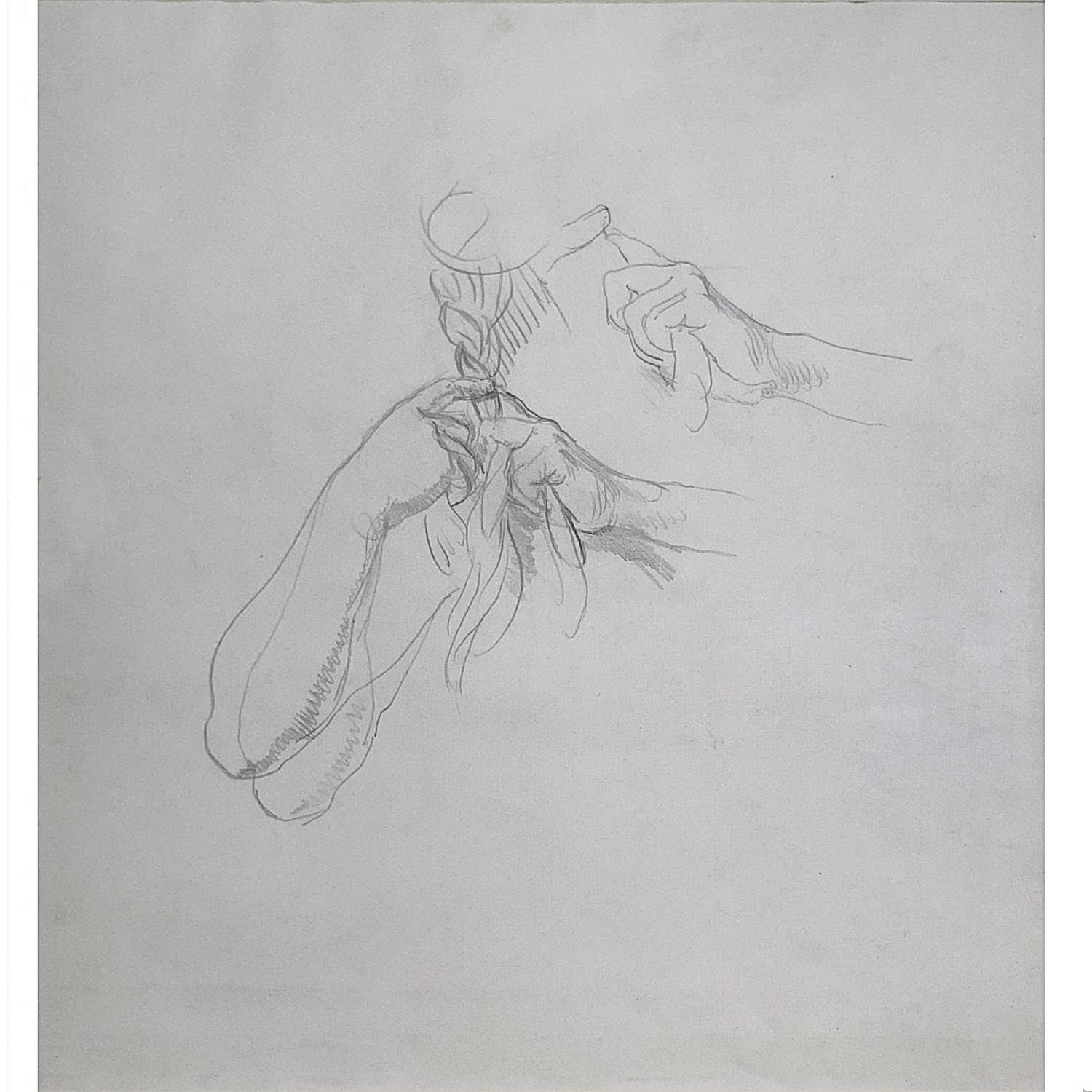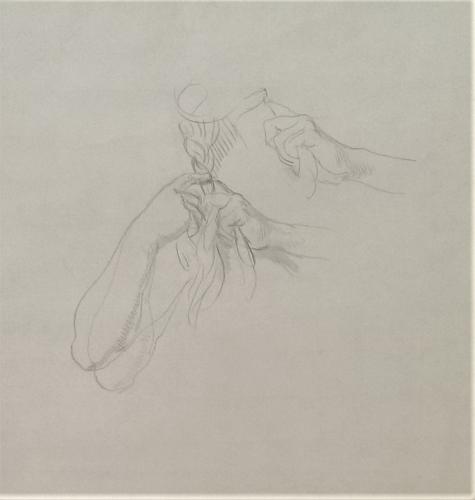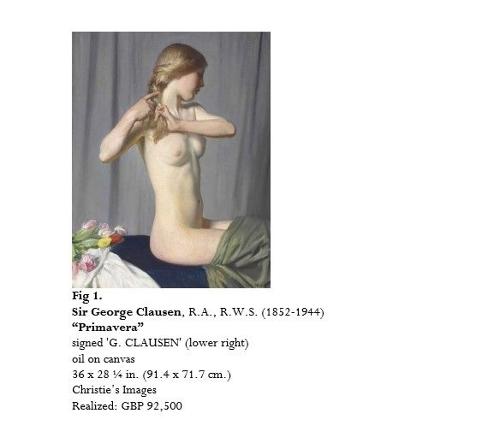
Code: 10126
Dimensions:
Sir George CLAUSEN, R.A., R.W.S., R.I. (1852-1944)
Study of hands plaiting hair for “Primavera”
Pencil on Paper
Circa 1914
320 mm x 300 mm
Literature
A similar study illustrated p.27 The Graphic Arts of Great Britain, MCMXVII, The Studio Ltd, London, 1917
Exhibited
Chris Beetles Ltd
Provenance
The Estate of the Artist
With Chris Beetles Ltd
Private Collection UK
The present drawing is an important preliminary study for the hands and the hair of Sir George Clausen’s celebrated 1914 painting “Primavera”. This work, a metaphorical depiction of spring, portrays a young, naked woman shown in profile, plaiting her hair as she prepares herself for the day [Fig. 1]. “Primavera” gained particular notoriety because it was subjected to a Suffragette ‘outrage’ and slashed on the 18th May 1914 whilst on exhibition at the RA. Having been removed from the show “Primavera” then went almost unseen for a century, until its re-emergence at auction in 2014.1
As Professor of Painting at the Royal Academy, Clausen had returned to the subject of the classical nude in the 1910’s, encouraging his pupils to study bas-relief fragments. In preparation for “Primavera” the artist made a number of sketches of various aspects of the composition with Dorothy ‘Dolly’ Henry and Lilian Ryan (the future wife of Sir Gerald Kelly) posing for him. It appears that Clausen had a firm idea for the work before concentrating on the various details. In showing the figure in profile Clausen’s motif almost becomes a classical Greek frieze - the series of drawings that formed the basis of the final work are all very sculptural in their form, prompting one critic to write on another of the series “in Mr. George Clausen's chalk study for his lovely picture, Primavera, the exquisite modelling is what we might expect from so complete an artist”.2 They also suggest that Clausen’s original conception was strikingly formal in its construction and design and that it owes much to his understanding of classical sculpture: each element of the figure being concentrated upon in turn, almost as fragments of classical relief carvings can be reassembled to form a whole.
In addition to this study of the hands, hair and plait, other known drawings which relate to “Primavera” include: a rough sketch of the pose 3; a similar though more detailed study of the whole composition in charcoal 4; a pencil study of the torso5 and a study of the head (without the hands or plait of hair).6
Notes
1. Lot 95, Christie’ King Sreet, London, 17 June 2014, Victorian, Pre-Raphaelite & British Impressionist Art [ Sale 1545] (Realized GBP 92,500)
2. Malcolm C. Salaman in “The Graphic Arts of Great Britain, MCMXVII”, The Studio Ltd, London, 1917
3. Formerly with Chris Beetles Ltd, London.
4. Lot 68, Christie’s King Street, London, 16 Jun 2015, Victorian, Pre-Raphaelite & British Impressionist Art [Sale 11148] (Realized GBP 30,000)
5. Victoria & Albert Museum, E.1937-1946
6. Royal Academy Collection (Object Number 05/3226), Gift of Sir Hugh Casson C.H., K.C.V.O., P.R.A., 1970
Bibliography
Malcolm C. Salaman & Charles Holmes [Ed.], “The Graphic Arts of Great Britain, MCMXVII”, The Studio Ltd, London, 1917
Albert Rutherston [Ed.] “Contemporary British Artists: George Clausen”, Ernest Benn Ltd, London, 1923

